Home » Posts tagged 'education' (Page 3)
Tag Archives: education
My Virtual Tour through the Smithsonian
Using a computer or mobile device, visitors may use virtual tours to explore the museum’s exhibits and locations on their own at their own pace, room by room. Along with historical exhibits that are no longer on display, visitors can also access specific collections and study areas at our satellite support and research stations.
How to Navigate the Site

Getting to the Virtual Tour is simple, click the VISIT tab up on the top. Scroll down the the VISIT AT HOME click on the READ MORE and it will bring you the Virtual Tour page. There you can find the ACCESS THE TOURS and pick which tour you would like to go on from your computer or smart device.
Current Exhibits

The tour I went on was the Current Exhibits. Once clicked on the Current Exhibit box it sent me to a long list of all of the exhibits, the list starts from the entrance where the Big Elephant is all the way to the Museum Grounds.
You can start your tour at any part of the Museum! I started in the Hall of Mammals, there are a list of links that can take you to any part of the exhibits.
Seeing the Exhibit
It was amazing with all of the angle you could do while in the Virtual Tour. The control panel let you move 360 degrees so you can see all of the exhibits angles. The arrows allowed me to move left, right, up, and down. You can even enhance the screen with the + or get closer to the exhibits with the – .


My Experience
The Virtual Tour was a great way to see all of the fun and educational exhibits at the Smithsonian. It was easy to use and best of all it was FREE! This would be a great activity to do in a classroom! It can be a fun scavenger hunt to do with the whole class. Over all I rate the Virtual Tour experience a 8 out of 10, I rather be in person and it took me a minute to get the hang of using the control bar but it was fun to explore the Museum being at home.
The multimodal functions of Sway
The internet has provided opportunities for connection and community all across the world. In chapter 2 of “Sail the 7 Cs with Microsoft Education”, there are countless stories of how communities were strengthened and built from different web tools, but perhaps the most touching was the one done through Sway.
Sway
Sway is a website built on expanding the experiences often seen in presentation tools such as PowerPoint and Google Slides. Instead of having blocked or sectioned areas, Sway operates as a flexible “story-telling” app by Microsoft to create a more interactive experience. When creating something on Sway, you can use videos, photos, and more to recreate or simulate a desired moment. That is exactly what Lee Whitmarsh helped to achieve in Alsager, England.

Sway Used to Better Life
Whitmarsh had students paired with couples in which one partner suffered from dementia, and had them use Sway to gather memories and mementos to help restore memories lost by the one partner. This process even continued after the project ended, with family members adding onto it regularly. This tool not only provides a more enjoyable presentation experience for students, but it also operates as an item to improve daily life for many people.
Textbook Learning
It is often overlooked how important the resources cited in a text can be. Whether it be scientifically, in a storybook or biography, appreciating the cited sources and tools provided by a piece of text allows not only for a better comprehending of what has been read, but also how to use it for yourself. This week’s reading is proof of that. With so many tools that I had been previously unaware of, it truly is a marvel how many different uses can come from one tool.
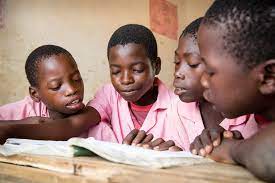
Conclusion
The beauty of “Sail the 7 Cs with Microsoft Education” is the varying tools it introduces you to. Prior to this week’s chapter, I had never even heard of Microsoft Sway. I took a look at the website after reading the chapter, and it truly is a great tool that can be used for any reason. It offers templates for blogs, newsletters, reports, resumes, presentations; there are endless possibilities on Sway. I think that using Sway as a main source for really any project would prove to be fruitful, with so many outcomes possible, Sway would aid any person in their day to day life. I learnt about a tool that I now may use in the future for my own projects. The value of Sway is unmeasurable, as seen in the story from this week’s reading, and I truly think that this tool is one that everyone should know about.
Citations
Keene, B., & Kersznowski, K. (2020). Sail the 7 Cs with Microsoft Education: Stories from around the World to Transform and Inspire Your Classroom. Dave Burgess , Incorporated.
Resources
Skype Connecting the World
When reading chapter 2 of the textbook “Sail the 7 Cs with Microsoft Education” by authors Becky Keene and Kathi Kersznowski, the tool Skype was one of many used to describe the importance of communication. Skype is a tool that allows students and teachers to discuss and see each other through computer webcams. The resource not only allows people to connect in their communities or schools, but all over the world. Many people got more familiar with Skype when the global pandemic hit in 2020 and shut down school, leaving teachers and students to be forced to meet over the screen. Although an adjustment, the resource was incredibly beneficial in keep the classroom connected despite the distance.
Seeing the World
Skype is a tool that can be used inside and outside the classroom. Not only does it keep friends and families connected when living away from each other, but it provides the opportunity for guest speakers to talk to the students despite not being able to come in person, for students to see places they’ve never seen, and allow staff to have conferences with each other or others without interrupting a routine schedule. In the text, an example is given of a teacher from a small town using Skype to connect students with others all around the world, allowing them to get answers to questions they wonder about difference places. This type of learning can help the students gain a better understanding of the world, a greater appreciation for others, and could inspire a passion in them for different subjects. These topics could include travel, art, journalism, or more.

Conclusion
There are many technological tools that can be helpful to both teachers and students in the classroom. A tool like Skype keeps students engaged, allows them to interact with others, and can show them places they have never seen before. The connection this tool creates can inspire empathy, appreciation, passion, and more in students that can help them in the future. Not only this, but it allows a teacher’s lesson to reach students on a deeper level, giving them a better understanding. This is not the only tool discussed in the text that provides different kinds of communication for students and teachers to utilize. Many of them can be very useful and valuable to children of all ages as well as adults.
Citations
Keene, B., & Kersznowski, K. (2020). Sail the 7 Cs with Microsoft Education: Stories from around the World to Transform and Inspire Your Classroom. Dave Burgess , Incorporated.
Learning Through Film
In today’s classrooms we have begun to implement new technologies and systems into our classrooms. This technology helps with improving our pedagogy skills, connect with students, and most importantly provide teachers with alternative means of teaching information. In the past most learning by students was done either through lecture or reading but with new technology being added to the classroom, teachers now have countless means to teach and engage students both inside the classroom. Not only does this make learning more interesting but I can also help students who have difficulty reading learn better. One of earliest inclusions of technology into the classroom was through video and film presentation.
Most people today may remember a time in school where teacher would wheel in a tv on a cart or set up a project on the white board. Films and video provide students with a new way of learning and teachers a new way of teaching.

19 Things Today’s Kids Will Never Experience in School. (2015). Pinterest. photograph. Retrieved February 19, 2024, from https://www.pinterest.com/pin/remember-this–189432728054383825/.
What is Teen Screen?
But what if this learning style and technology was taken out of the classroom and into a theater. That is the goal of the organization Named Teen Screen. As their website states “Teen Screen is a free educational experience that allows students of different backgrounds and learning styles to explore important, often difficult, topics through the engaging and dynamic medium of film. Since 2005, over 100,000 students and teachers in the region have joined together in movie theaters and in classrooms virtually to watch and discuss movies of historical, cultural, and social significance—and they have walked away changed forever” (“Team Screen”, n.d.). Team Screen allows teachers to choose a film for their class, a screening date, and choose whether to hold it virtually or selected location. Teen Screen then provides a study guide for students to complete while watching the film, afterwards students discuss and reflect on what they have learned in the film or what interested them.
I choose this Tool to blog about because I am a very audio-visual learner and I know that for students like me, we learn much better watching and listening to a film than reading a book. I also believe that film is often more engaging and interesting for students increasing the likelihood that students will pick up information while watching. Lastly, I think the social aspect of being able to meet up with friends to watch and discuss a movie together helps to improve social bonds and connects between students. Teen Screen provides all of these things in one simple service that already has a massive archive of films from topics such as Holocaust, Genocide, STEM, Environmentalism, and Social Justice/Human Rights.

Horn, E. van. (2015). 19 Things Today’s Kids Will Never Experience in School. The Aztlan. photograph. Retrieved February 19, 2024, from https://ehsaztlan.com/4851/uncategorized/anyone-can-become-a-movie-producer/.
I would love to implement this tool into my classroom. I already hope to use film as a tool for teaching in my classroom and Teen Screen can help provide me with the tools and resources needed to create an effective and diverse set of films and activities for students. I would also like to encourage class discussions on important topics presented in each film similar to a book club so that students can socialize while also sharing ideas with each other. I hope that more teachers take note and use this tool for this classroom so that learning can become more accessible and fun.
Thanks for reading my 3rd Blog post. If you want to check out my pervious blogs, follow my twitter account @troymdemant. Also check out the Teen Screen website Here for more information.
References
Teen Screen – How It Works. Teen Screen – How it Works | Film Pittsburgh. (n.d.). https://filmpittsburgh.org/pages/teen-screen-how-it-works
Teen Screen in the Classroom
What is Teen Screen?
Teen Screen is a tool that incorporates a diverse lineup of movies that focus on topics that are important, but may be difficult and create an innovative experience. This resource caters to all different backgrounds, learning styles, grade levels, and teaching methods. Class groups can meet at movie theaters or watch the films virtually from the classroom or at home, and each way involves a open discussion about the film which can include an experiences educator that prepares the students for the film or lead follow-up conversations. Teen Screen has movies that focus on Holocaust, Genocide, STEM, Environmentalism, and Social Justice/Human Rights themes. There are so many ways teachers can choose to include this in their lesson in a way they decide which can be a study guide, special guests connected to the topic, discussions, or responses to the film.
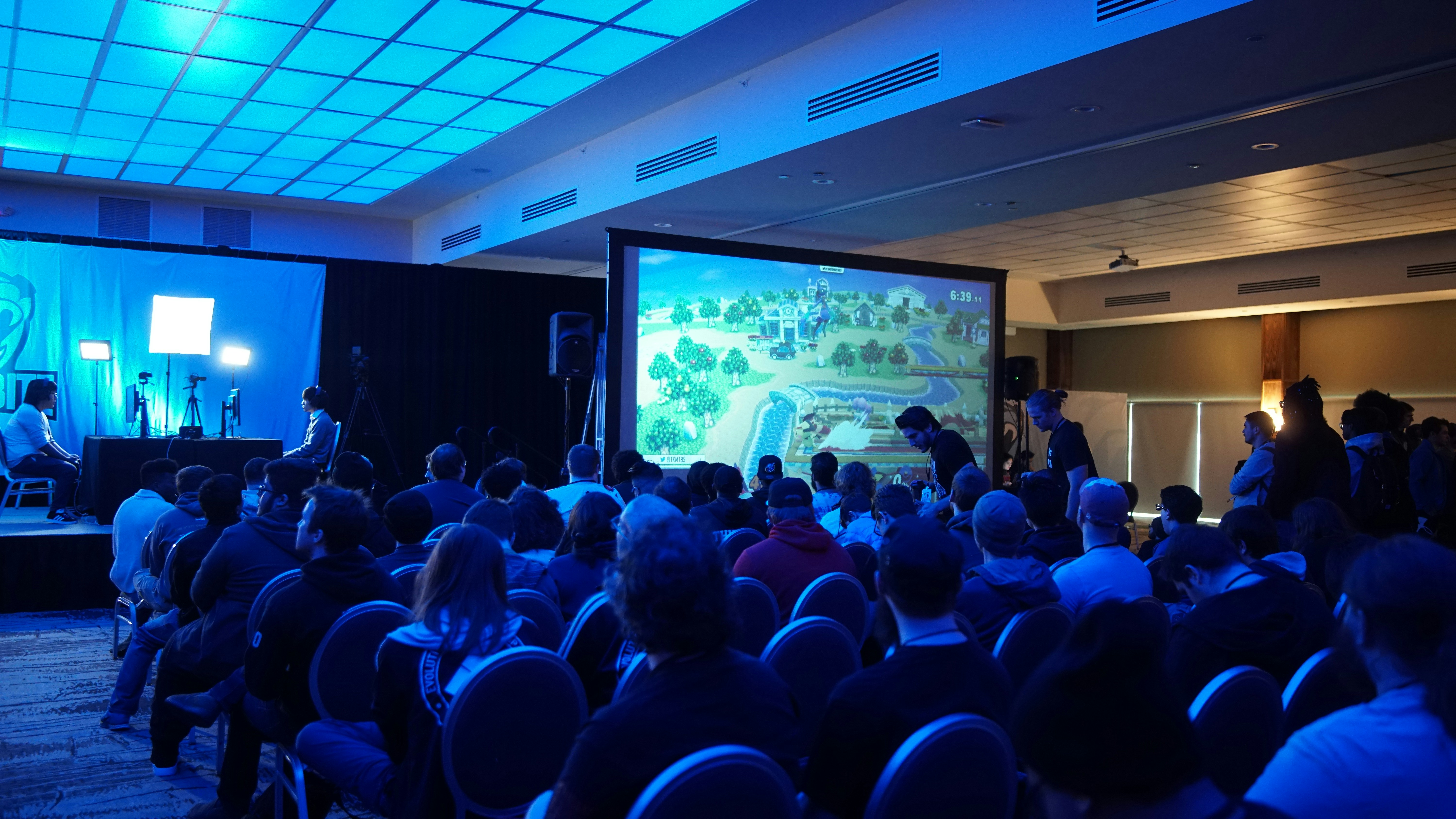
My Assessment
I chose this tool to talk about because it is a creative way to teach students about certain topics and brings in outside perspectives that explore important topics. As a movie fanatic, I have found from my own experience that films are some of the best ways to learn about topics because it keeps people engaged through an emotional story. As a Holocaust and Genocide minor, I found the movies on those themes to be the most interesting. Throughout the classes I have taken, I have watched multiple movies on the Holocaust and found them to be the most inspiring, educating, and emotional stories. In my future classroom, I would hope to incorporate this resource into my lessons based on books we are reading in class, since I would like to be a High School English teacher. I feel as if this tool can bring more depth to a topic and provide an open conversation about what we are learning.
Expanding a Child’s Horizons with Bilingual Kidspot!
Grades: K-8
Everyday, people from places all over the world are becoming increasingly connected. Whether it be through the comments in a video they both like, social media posts, or even in video games, humans have found ways to make connections. The best part- the interactions experienced do not even have to be in the same language! But what if it was possible to allow these connections to happen at an earlier age?
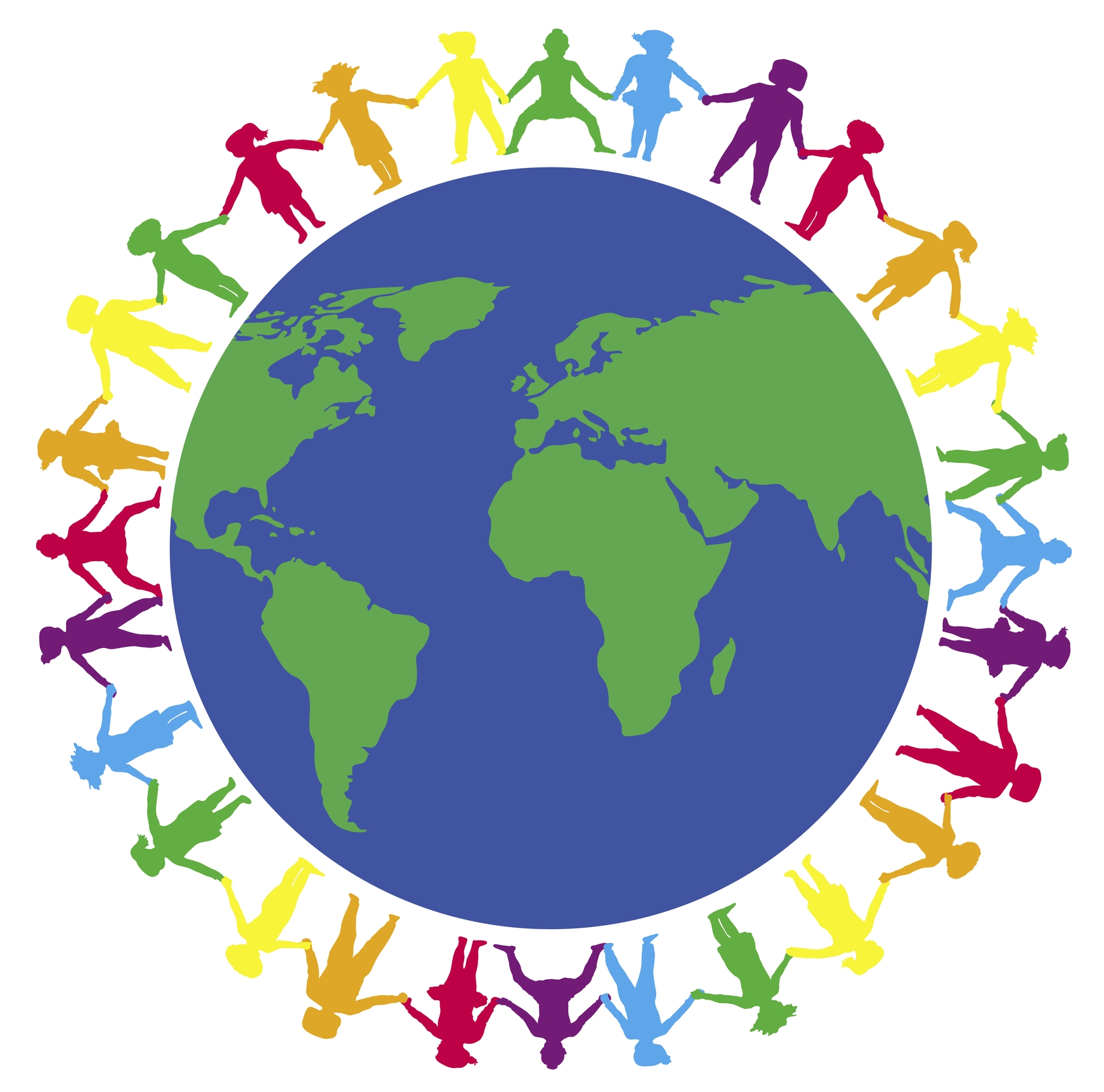
The Perks of Bilingual Kidspot
Bilingual Kidspot is a website dedicated to providing books and other resources to kids to aid in their journey of becoming bilingual! They have books in English, Spanish, French and more. Don’t know where to start, well there are several links on different pages of the website that help guide both parent and child to find what can best aid the child in learning a new language, or even just reading for the fun of it!

My Review
When reviewing different tools for this blog, this is the one that got me the most excited. I remember being ecstatic in elementary school when we got to learn Spanish, only to feel let down because I felt as though I never got to learn anything, and I was never able to remember anything since I did not have the resources outside of school to learn it. In my beginning paragraph, I mentioned how the world has grown to be connected in a way that was not previously imaginable. Having the materials to teach, either as a teacher or a parent, would only better the lives of future generations. Not only will students be able to communicate with others, but they may have better opportunities later in life when they become a part of the work force. I chose this tool for those reasons, as there are no negatives to knowing multiple languages. I find that the most useful function of this website is the various learning tools within the website. There is a tab about culture, which includes facts about how different cultures celebrate the same holiday, or how cultures have one specific holiday that others do not, such as Ramadan. There is also a tab titled “Bilingual Kids”, which gives tips on raising a bilingual child, and so many other types of resources found in other tabs. The website provides access to activities to improve speech, writing activities for creativity and more, all of which would be useful in a classroom setting. In my own classroom, I would set time aside to use one of the online books found on the website to do a class activity, and then break down into small groups so that students can help each other understand and learn more from the discussion. In my eyes, giving students access to communicate better with others is only beneficial for everybody, so why not make the most out of it by providing the resources to learn another language!
Educational Technology
In today’s world, no one can escape technology. Something that can be difficult to use but has many important purposes, technology has adapted over the years so it can be accommodating to everyone. Technology has even made everyday items or actions accommodating for people around the world. A very useful tool in the everyday, work, and education environment.
Technology in the Classroom
Technology isn’t just computers and cell phones it is any tool that can be used to accommodate a task. for example, flashcards are an educational tool used to help memorize and study. All educational programs use some form of a tool to help lessons be more engaging. The elementary and primary levels use an abundance of tools to correlate lessons. A tool that I found to help engage and teach students about global citizens is the Global Kids Activity Deck.
Global Kids includes 50+ hands-on activities divided into 5 categories to teach children about crafts, food, games, festivals, and ways of helping others around the world. Since the activities are about global citizens this tool would be used for history lessons.
With the 5 categories, it is easy to plan out certain activities for certain lessons. Depending on the curriculum these activities can be centered around a world culture unit.
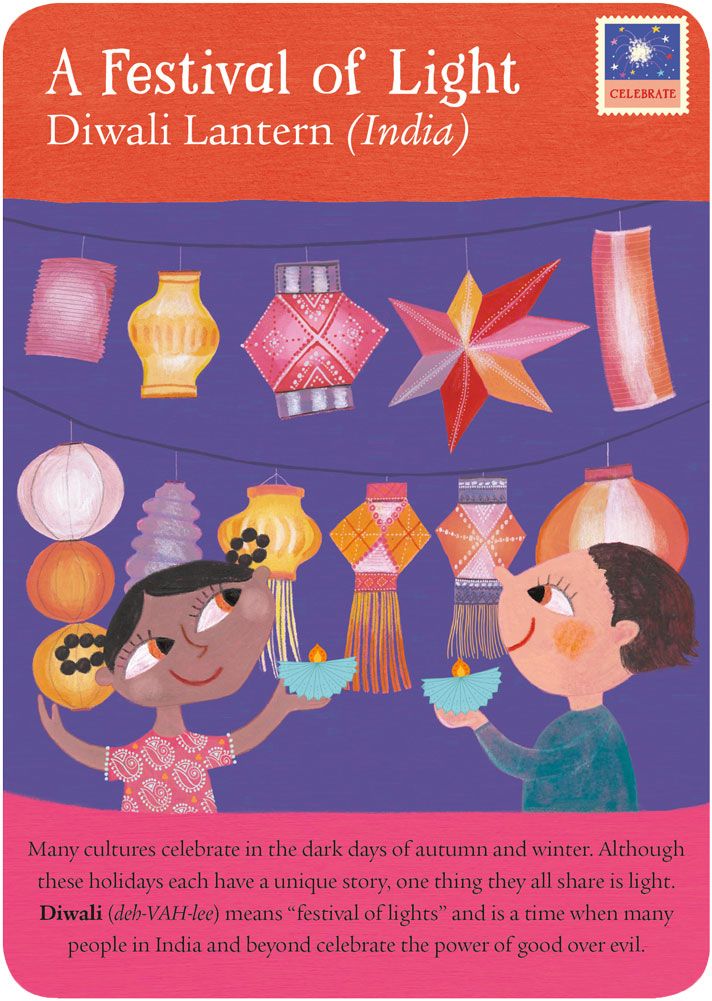

This activity is a hands-on one where the students get to learn about A Festivals of Light the Diwali Lantern in India. Depending on the activity the deck will have set instructions on what do to and how to do it. Also, each set has a little box at the bottom with a fun fact about a corresponding topic.
How I would use this Tool
As I stated earlier this activity deck would be beneficial for a history lesson about other cultures. Using the actives is very helpful for the teacher because it is a kick start to their lesson plan. It also gets away from the text book making the lesson more engaging about world cultures and global citizens.
Thank You for Viewing! give a follow on X @trefz-riley
Students and Global Goals
Do our students really know what is going on around in the world? Do they understand how us as a community can come together to change that negativity? A published article, Global Education Checklist, helps teachers and other school employees find out how to teach goals to students. The checklist provides what the children should know for each of the discussed goals. For example, it talks about the library. It asks educators if books involving global goals are available for students, are the books diverse talking about all different ethnicities, are items up to date, and more. This checklist helps so much for educators to make sure everything is in check to properly teach and include all children. There is a scale provided to help the educators rate how well the school does on a scale of 1-4 with the global education. There is a section asking about the textbooks provided, there is a state/institutional checklist, state standards and curriculum. This part is the section for state educators’ agencies. Overall, this is such an amazing checklist, that all educators should take a look at. The checklist goes for all K-12 students, all the schools should have this checklist gone over and each Indvidual teacher. For the future, in my classroom I will always be sure it fits all these requirements, it is so important to expose children of all ages to the global topic. Making sure to have an inclusive and safe environment for all of the future students I will have!
Using Collaborative-Technology to Improve Learning
Advancements in School Technology
Every year, educators are discovering new uses for technology in the classroom. Over the past five years, more and more schools have been adding various forms of technology to classrooms. Whether it be tablets, laptops, or other tech, these additions to the educational world means educators have to figure out one thing-how to possibly include these devices into daily lessons and work.
Technology for Collaboration
Technology can be a wonderful tool to increase collaboration amongst classrooms, and many educators have realized this. With all of the apps and websites that can be found on the internet, it is no surprise that the brilliant minds of educators found endless ways to use those apps to their advantage.
Video Collaborations
The internet has allowed for people (who would otherwise seem worlds away from each other) to be able to communicate and connect with others from all over the world. One such app that can be used to promote connection is Skype, a platform from 2003, that is still usable today. Teachers have been able to use this platform to have their students interact with other students from different countries. Stacey Ryan, a teacher from Kansas, USA is just one example. After her students connected over Skype with students from Kenya and seeing how their lack of resources affected their lives, her students were able to collaborate and raise money to have a new water system implemented into the area those students in Kenya were from! All of that work would never have happened the way it did were it not for the wonderful collaboration and connection made possible by technology!

The Use of Popular Kid’s Media in Classrooms
Often times, there is a disconnection between students and teachers K-12. Part of this disconnect comes from a lack of interest in material that younger students have a hard time relating to. The solution – incorporating popular media into your lesson plans. Now, this does not necessarily mean that the way to a student’s heart is through memes and playing songs in the classroom during independent work times, but using known and pre-existing platforms to encourage students to interact with each other. One such platform is actually the 2009 videogame Minecraft. This beloved game is known as a “sandbox” game, which means that the player can do whatever they want, how they want, and when they want. The world created within the game can be manipulated in any way, and most importantly, can be accessed by multiple people. In 2016, Minecraft got an update to be used in classrooms, “Minecraft: Education Edition”. This specific part of the platform allows for the game to be used by educators to help students create, learn, and collaborate with other students. The best part is, this platform can be used for any subject: math, science, literature, history, and more! Use the game to recreate a story from a book your students read, allow them to help each other discover ways to best convey a scientific comparison between the game and the real world. You can even have students play “survival mode”, which forces the player to hunt and gather materials to mimic how life had been like in the past.
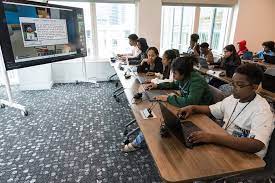
The Whole Picture
Though there is hesitance from all parties (parents, teachers, students) it is important to note that with the constant evolving of technology in the world, knowing how to use technology in the classroom is key to helping students prepare for the world ahead of them. By using modern technology, students have access to new learning platforms, collaborations with other students, and even more power to change the world through communication and collaboration!
Keene, Becky, and Kathi Kersznowski. “Collaborators .” Sail the 7 Cs with Microsoft Education: Stories from around the World to Transform and Inspire Your Classroom, Dave Burgess Consulting, Incorporated, San Diego, 2020.
Global Collaboration and its Benefits
Global Collaboration has more benefits then just extending ones knowledge and understanding in educational subjects, it can also help students better understand their peers, their emotions, social interactions, and the whole world outside of their community. Introducing students to a wider world can inspire them to explore, to create, or to make changes happen where needed. While technological advances can be intimidating, having the tools to connect with people in different countries can expand the younger generations mind and create new ideas to better our society and planet. Gosia Jaros-White discusses in their article titled “Four Amazing Benefits of Global Collaboration,” the gains of global collaboration that touch on subjects outside of classroom knowledge.
Inquiry-Based Learning
Inquiry-based learning focuses on letting the student guide what they want to know, bringing attention to their questions or ideas. Global Collaboration is a great way to trigger this kind of curiosity that engages students in their own learning, making them more excited to come to class. In their article, Gosia Jaros-White writes, “in global collaboration projects students ask questions and make observations about their peers” (Jaros-White, 2023). Allowing students to explore their curiosity cannot only expand their knowledge on certain subjects, leading them to inquire for more answers, but also keep them engaged in the classroom.
Diversity/Common Ground
When communicating virtually with students all over the world means they will naturally notice differences from where others live including different accents, ethnicities, clothes, and more. This allows them to have a deeper appreciation for diversity and learning more about different cultures around the world. It also allows them to find a common ground with others that allow the differences and distance to not seem so large. Finding this common ground leads the students to not only be talking to someone across the globe, but a new friend as well. As the author states in their article, “discovering that their global partners listen to the same K-pop artists or read the same manga books leads to rich discussions and deeper connections with people they wouldn’t normally interact with before” (Jaros-White, 2023).

Students becoming Teachers/Empathy
One thing that comes along with talking to students from countries across the globe, is the sharing of knowledge. Having the students interact with one another can allow them to help others in different subjects or projects and answer questions. That is not the only way students can become teachers as seen by the example given by Gosia Jaros-White, who states that sharing phrases or words in languages that others are trying to learn can aid in the process (Jaros-White, 2023).
Every person has a different life and face different challenges, and giving students the opportunity to comprehend the challenges those from around the world may face can allow their empathy to grow and inspire them to create change. There are examples all over the world of children stepping up; raising money, hosting fundraisers, and more for different causes. Global Collaboration can only expand on this, providing them with the chance to help others and with virtual meetings, they won’t just be helping a group of kids their age, but their own friends or peers (Jaros-White, 2023).
Closing
There are many benefits to global collaboration and as it is used in more classrooms, they will only grow. The article used today only discusses merely a few that I believe are important for educators to know as they decide whether or not to implement global collaboration into their classroom. There are so many ways technology can be used in the classroom to help students and expand their knowledge, and not just on school subjects, and it can all be done in quick, simple steps with more educators building a community online everyday.
Citations
Jaros-White, Gosia. “Four Amazing Benefits of Global Collaboration.” Level Up Village, 10 July 2023. https://levelupvillage.com/four-amazing-benefits-of-global-collaboration/
